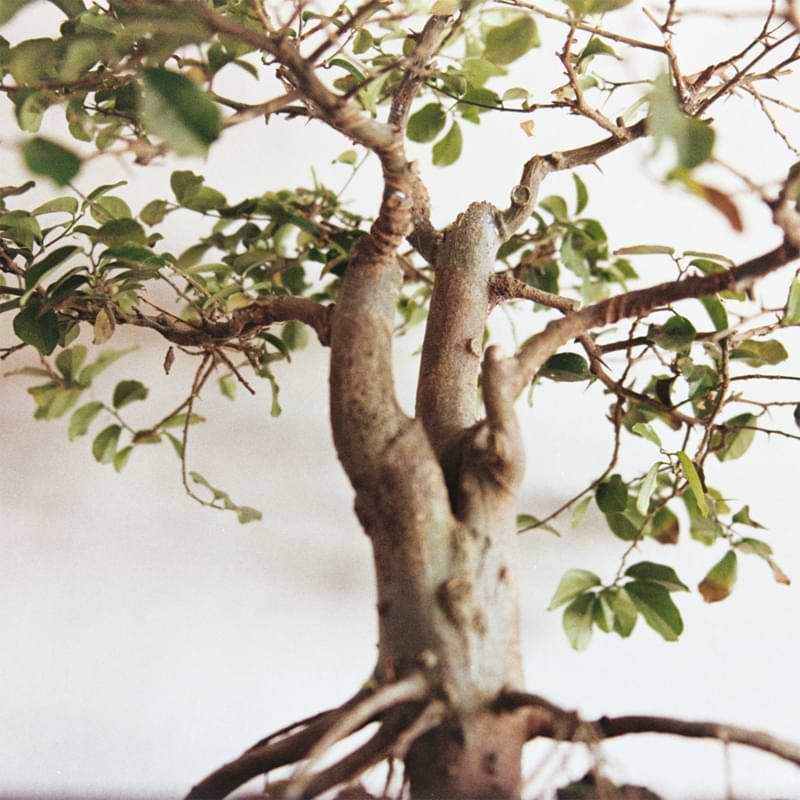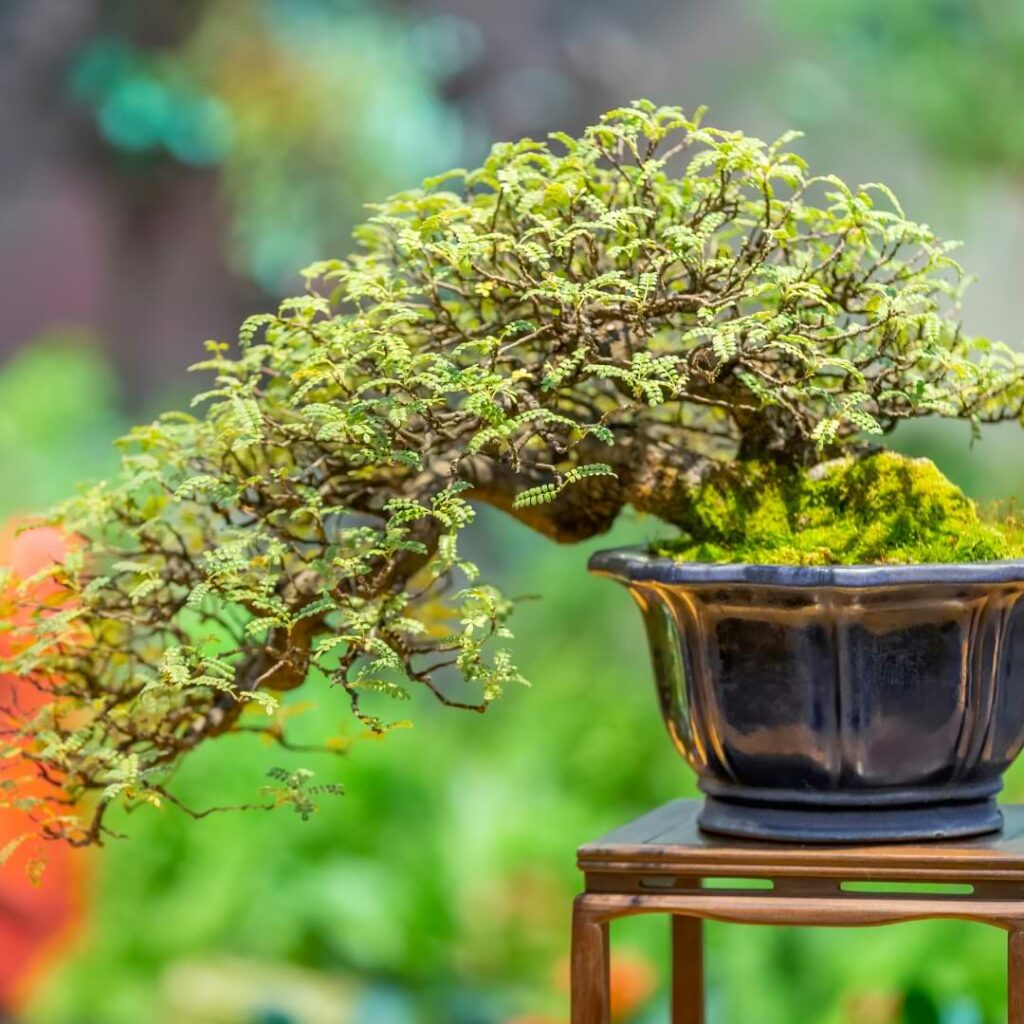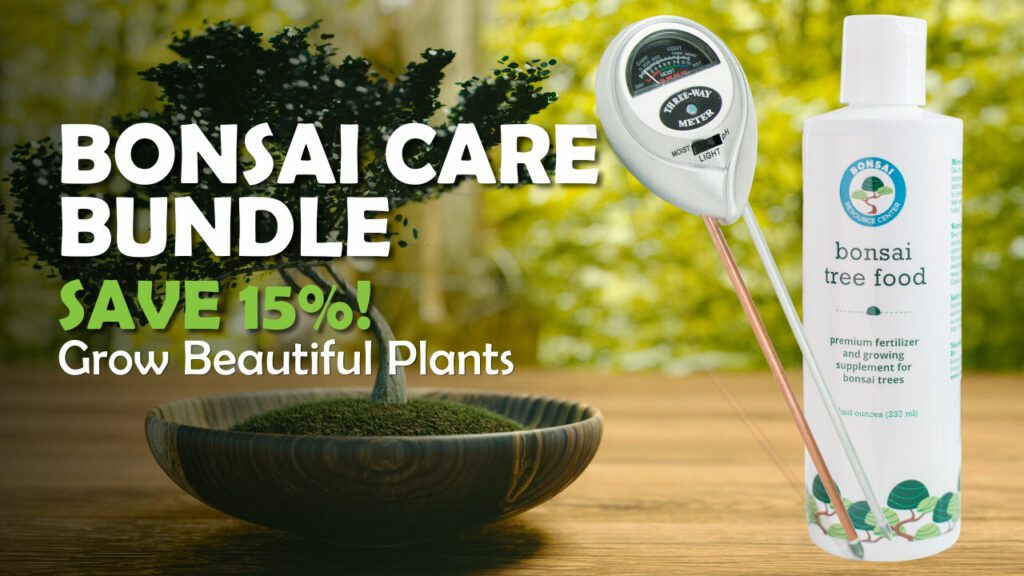10 Reasons Why Your Bonsai Is Not Growing
Bonsai not growing? Don’t worry! This ancient horticultural practice requires patience and care, and sometimes, even the most experienced practitioners encounter challenges getting a bonsai tree to grow healthy and strong. Check out the top ten reasons why your bonsai could be struggling to grow for helpful tips and solutions.
Why Is My Bonsai Not Growing? 10 Reasons & How To Fix Them
1. Bonsai Tree Variety
Just about any tree with the right care can become a bonsai. However, some species are much harder to grow in climates outside their natural habitat, which is the leading cause of bonsai trees not growing as they should.
If you live in a hot, dry climate, you’ll need a tree that’s more tolerant to these conditions. Species like the juniper and pines tend to thrive in warmer climates, while species like the elm and maple can handle cooler temperatures.
Additionally, some trees are notoriously challenging to grow even without the bonsai practice. If it’s your first time, choose a beginner-friendly bonsai tree like the Jade or Ficus tree to improve your chances of success.
2. Bonsai Tree Age
Starting wire wrapping on a tree with underdeveloped root and trunk systems will ultimately lead to stunted growth. This is often seen in trees wrapped before the age of three when these vital systems are still too delicate and may get strangled under the pressure of the wire.
Unfortunately, there isn’t much you can do about this scenario other than unwrap your tree and give it more time to grow.
The best way to tell when underdeveloped roots or trunk systems are mature and ready to be wrapped is by checking the tree’s thickness over time. A tree should have a thicker trunk at the bottom than the top; if it’s still too skinny, wait a little longer. The roots should also be able to support the tree’s weight before attempting any wiring techniques.
3. Watering Issues
Once weekly watering is usually all a bonsai tree needs to thrive; however, slight adjustments to the watering schedule may be necessary depending on the species and climate. Ultimately, though, like the art of bonsai itself, watering is all about balance. Too much or too little, and you’ll notice your bonsai not growing.
Too much watering leads to soggy roots, which can cause root rot and kill the tree. On the other hand, watering too little leads to dehydrated soil and nutrient deficiencies, which are also major causes of stunted growth.
We recommend that if the soil looks dark and feels moist to the touch, don’t water your tree. If the soil looks dry and feels dry to the touch, it’s time to give it a drink.
4. Lighting Issues
Whether placed indoors or outside, bonsai trees love light. So, no matter where you keep them, make sure a tree receives 5 to 6 hours of sunlight a day. Bonsai trees gain the majority of their energy through photosynthesis, and lack of the right amount of light would be another cause for stunted growth.
If you live in areas where sunlight is limited, invest in grow lights to make sure your tree receives the necessary amount of light. If your bonsai is placed indoors, rotate it every few days to ensure even exposure to sunlight on all sides.
Remember that a bonsai tree is like any other plant and can experience heat stress if exposed to too much direct sunlight. If your bonsai is covered in white or brown patches, it’s a sign of sunburn; move the tree to an area with less intense light and provide some shade during peak hours.
5. Poor Soil Conditions
Poor soil is one of the most common causes of bonsai trees not growing properly. The small amount it is grown in is the tree’s only source of nutrients, so if the soil is not conducive to plant growth, it will impede your bonsai’s development.
A common mistake is using regular garden soil for a bonsai tree, which often does not provide enough drainage or nutrients. Instead, use specialized bonsai soil mixes that allow for proper water drainage and contain essential nutrients for healthy growth.
Also, consider adding moss or other types of top dressing to your bonsai soil to help regulate moisture and provide additional nutrients. As a bonus, these small additions will also enhance the overall look of your bonsai, elevating its appearance wherever you have it in your home or garden.
6. Fertilizing Issues
While soil quality is crucial, so is the addition of fertilizer to provide your bonsai tree with essential nutrients. However, like watering, fertilizing requires balance, and overdoing it can lead to adverse effects.
Typically, bonsai trees must be fertilized weekly during their growing season (spring and summer) and monthly from fall to spring. Use a balanced liquid fertilizer or Bonsai Plant Food to provide a well-rounded combination of essential nutrients for your tree’s growth.
7. Pot Size
A bonsai tree’s root system should fit comfortably in its container without being cramped or having too much extra space. Too small of a pot can restrict the growth and development of the roots, while one too large can cause overwatering and nutrient deficiencies that can stunt its growth.
Check the size of your pot and make sure it is at least 2/3 of the tree’s height when it’s rectangular or oval-shaped. If you use a round pot, select one with a diameter 1/3 the size of the tree’s height. Anything larger or smaller than these recommendations will lead to more than just growth issues, including but not limited to balance, aesthetics, and fatal health problems.
8. Pests & Diseases
Aphids, spider mites, and mealybugs are common pests that can infest your bonsai tree, causing damage to the leaves and stunting growth. Similarly, fungal infections like powdery mildew can hinder a bonsai’s development.
To prevent these issues, regularly inspect your bonsai for any signs of infestation or disease which can include yellowing or wilting leaves, unusual spots or patches on the leaves, and webbing on the branches. If you notice these signs, isolate and treat the affected tree immediately with Lear Armor. This is a natural, non-toxic solution that will protect your bonsai and promote healthy growth.
Pro Tip: Infestation and disease can severely damage the immune system of a bonsai, so as part of a comprehensive treatment plan, use a plant probiotic formula to boost your bonsai’s immunity, aid in nutrient absorption, and promote overall health and growth.
9. Over Pruning
Pruning is a natural part of the bonsai process, but overdoing it can lead to stunted growth. It’s important only to prune your bonsai when necessary and always follow proper pruning techniques to minimize damage.
Avoid removing more than one-third of the tree’s foliage at a time, as this can shock the tree and impede its growth. Additionally, be mindful of where you are pruning and make sure that you leave enough leaves for photosynthesis and nutrient absorption.
Remember to always use sharp, clean pruning shears to avoid tearing or damaging the tree’s branches. We recommend sterilizing the shears before use so that no unwanted bacteria or fungus is transferred onto the sensitive pruning wounds.
Pro Tip: Enhance your home with even more bonsai trees by planting your cuttings in new pots. Use a propagation promoter to ensure healthy root growth and give your new bonsai the best start to life.
10, Incorrect Temperature or Humidity
Bonsai trees are sensitive to temperature and humidity changes, so keep them in an environment with consistent conditions. Sudden drops or rises in temperature can shock a bonsai tree and lead to stunted growth. While tree species vary in their preferred temperature ranges, most bonsai trees thrive in temperatures between 60-75 degrees Fahrenheit.
Humidity is also crucial for bonsai growth, as too little or too much can cause leaf browning and stunting. Use a humidity tray or regularly mist your tree to maintain the ideal moisture level in the air around it. Bonsai trees thrive in humidity levels between 40-50% depending on the species, so brush up on your tree’s specific humidity needs before making any adjustments.

Bonsai Plant Care Tips
While correcting issues that lead to stunted growth can enhance the overall health of your bonsai, there are also general care tips to keep in mind for ensuring your tree’s continued health and development:
- Use room temperature water when watering your bonsai tree.
- Keep a moisture meter on hand to monitor the soil’s moisture level for more accurate watering.
- Choose LED or HID grow lights as they provide the ideal light spectrum for bonsai trees indoors.
- Consider repotting your bonsai every 2-3 years to refresh the soil and root-bound conditions.
- Avoid placing your bonsai near drafts, vents, or heaters, as these can cause rapid temperature and humidity fluctuations that harm development.
- Only bend and shape your bonsai during its growing season to avoid undue stress on the tree.
- Choose pots that are not glazed on the inside to support root development & healthy growth.
- Avoid chemical-based fertilizers as they can harm the delicate root systems of bonsai trees.
Finally, research your specific bonsai species and its unique care needs. Each tree is different, and understanding the basics of bonsai care can help you troubleshoot any growth issues.
Bonsai Growth FAQ
1. What is the best bonsai wire to help my tree shape grow?
The most effective bonsai wire is aluminum (or annealed copper), as it’s easy to bend and stays in place well. Remember that when wrapping, always go from the trunk to the stem and leave even spacing between the rings to avoid constricting growth.
2. What should I do if my bonsai tree’s leaves are turning yellow?
Yellowing leaves can indicate over or under-watering, root rot, pests, or nutrient deficiencies. Check the soil moisture level and inspect your tree for any signs of infestation or disease. It may also be beneficial to feed your bonsai with a balanced fertilizer to ensure it is receiving all the necessary nutrients for healthy growth.
3. Will reporting help my bonsai tree grow?
Yes, repotting is an essential aspect of maintaining bonsai tree health. By repotting, you refresh the soil and allow for better root development, leading to healthier growth. Make sure to repot your bonsai every 2-3 years or as needed, based on the size of your pot and the development of your tree’s roots. Remember to use a well-draining soil mix designed explicitly for bonsai trees.
4. How fast does a bonsai tree grow?
The growth rate of a bonsai tree can vary depending on the species, growing conditions, and care. Generally, most bonsai trees require 5 to 10 years to reach maturity and can live for decades with proper care. However, some species may have a slower or faster growth rate, so it’s essential to research your specific tree’s needs for optimal growth.
5. What is the easiest tree to bonsai?
There is no one answer to this question, as the easiest tree to bonsai will vary based on personal preferences and growing conditions. However, some beginner-friendly species include junipers, Chinese elm, and dwarf jade. These trees have a higher tolerance for different environments and are more forgiving when it comes to mistakes in care.
Give Your Bonsai The Care It Needs To Grow Strong
It can be a bummer when your bonsai is not growing, but with these tips and tricks, you can ensure your tree gets all the care it needs to thrive. Remember that one or more of these issues may cause stunted growth, but by maintaining a regular care routine that covers all the bases, you can set your bonsai up for success and continue to enjoy its beauty for years to come.
The Bonsai Resource Center is dedicated to providing valuable information and resources for bonsai enthusiasts of all levels. Sign up for our newsletter and shop our hand-picked products to ensure your bonsai receives the best care possible. Happy growing!
Bonsai With Us!
The Bonsai Resource Center is here to help you learn the best bonsai tree care and provide you with the tools you need to keep your tree healthy and strong. Explore our other articles, visit our online shop, and connect with other bonsai lovers in our Facebook group to learn everything you need to know about this rewarding hobby!
More Bonsai Tree Care Resources
How to Care for Your Bonsai Fruit Tree (and Our Three Favorites!)
The Only Bonsai Tree Care Calendar You’ll Ever Need



